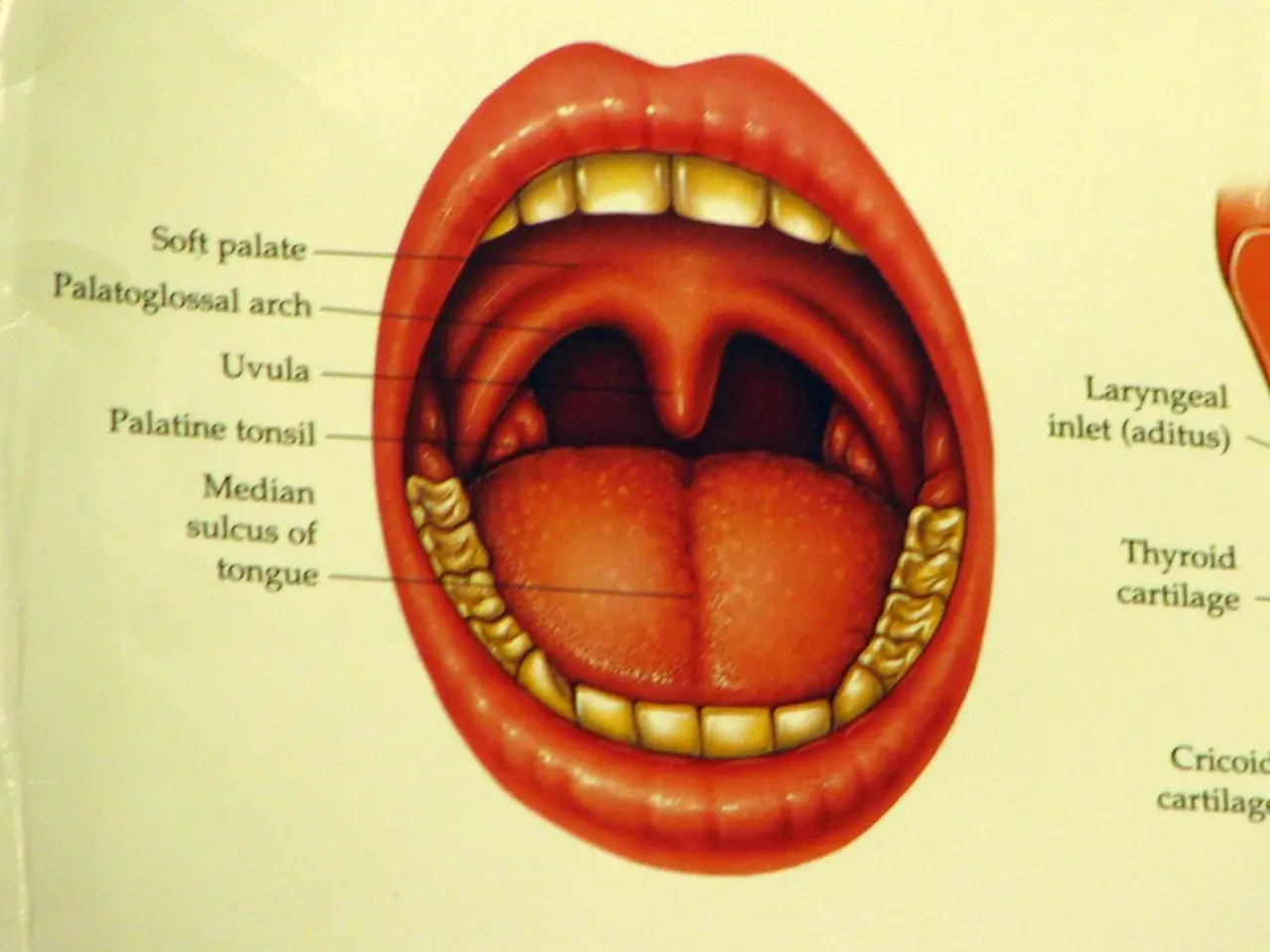Stages of Oral Cancer: Crucial Information to Understand
Oral cancer, also known as relapsed oral cancer, can occur in various stages, each with its own set of characteristics and implications. The TNM system, developed by the American Joint Committee on Cancer, is the most commonly used method for staging oral cancer.
This system divides the tumor (T), lymph nodes (N), and metastasis (M) into different categories, providing a comprehensive understanding of the cancer's progression.
Recurrent oral cancer can spread locally, regionally, or to distant organs. Symptoms of cancer spreading to nearby tissues include difficulty swallowing or chewing, difficulty moving the tongue or jaw, swelling in the jaw, and voice changes.
In stage 0 oral cancer, also known as carcinoma in situ, cancer cells are limited to the endothelium and may not show any symptoms. This stage is curable, and people at risk of this type of cancer can benefit from screening to allow for early detection.
As the cancer progresses, it moves into stage 1. In stage 1 p16-positive oral cancer, the tumor can be up to 4 cm and has not spread. For p16-negative oral cancer, the tumor is also limited to 2 cm or smaller and has not spread.
In stage 2, the tumor does not spread, but for p16-positive cancer, it may be present in nearby lymph nodes. For p16-negative cancer, the tumor remains 2 cm or smaller.
In stage 3, the tumor can be larger for both p16-positive and p16-negative oral cancer. In stage 3 p16-positive oral cancer, the tumor can be T3 or T4. In stage 3 p16-negative oral cancer, the tumor can be T3 and N0, or T1, T2, or T3 with N1.
As the cancer progresses further, it moves into stage 4. In stage 4a p16-negative oral cancer, the tumor can be T4a and N can be N0 or N1. In stage 4b p16-negative oral cancer, the tumor can be T4b, which is the most advanced T stage, and N can be N3. In stage 4c p16-negative oral cancer, the tumor can be any T, N can be any N, and M is M1, indicating that cancer has spread to distant organs.
The main difference in staging between p16-positive and p16-negative oropharyngeal cancers lies in how the 8th edition of AJCC/UICC TNM classification (TNM8) treats these tumors as distinct entities, reflecting their different biology and prognosis.
p16-positive (HPV-mediated) oropharyngeal cancers are staged using a specific TNM8 system that reflects their generally better prognosis despite often presenting with extensive nodal involvement. This results in downstaging compared to the traditional system. For example, multiple or large nodal metastases still classify as lower N categories than in p16-negative tumors, acknowledging their favorable response to treatment and survival outcomes.
On the other hand, p16-negative oropharyngeal cancers, often not HPV-related, use the conventional TNM staging system without the p16 considerations. These tumors typically have a worse prognosis, and nodal disease contributes to higher stage groups reflecting more aggressive behavior and poorer outcomes.
Regarding prognosis, p16-positive tumors have a significantly better prognosis overall, with improved loco-regional control, disease-free survival, and overall survival compared to p16-negative cancers. However, the prognostic value of p16- positivity varies by tumor subsite within the oropharynx and is strongest in tonsil and base of tongue tumors.
p16-negative tumors generally show worse outcomes, and patients may require more aggressive multimodal therapy, reflecting their more aggressive biology.
In summary, the TNM8 system distinctly stages oropharyngeal cancers based on p16 status to account for the biological and prognostic differences, with p16-positive tumors downstaged relative to p16-negative ones due to better treatment response and survival rates. The prognostic impact of p16 is also subsite-dependent within the oropharynx.
It is essential to note that people who regularly smoke tobacco and use alcohol are at higher risk of oral cancer. Oral cancer stages help doctors plan treatments and predict outcomes, emphasising the importance of regular check-ups and early detection.
Read also:
- Chest X-ray findings in heart failure: An overview
- Improvement indicators for pneumonia: Recognizing the signs and additional information
- Seniors with no offspring in Kerala are entitled to legal maintenance, only from their direct heirs, as ruled by the High Court.
- Chest Pain Connected with Hiatal Hernia: Remedies and When to Request Assistance





